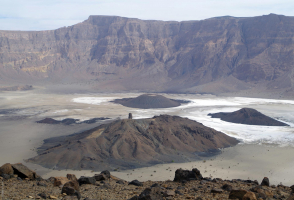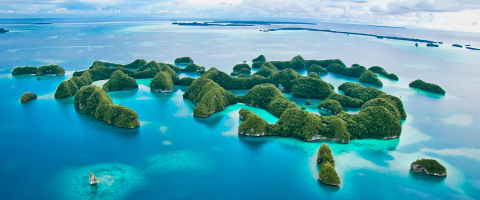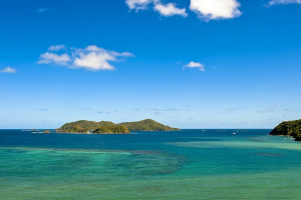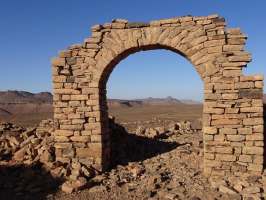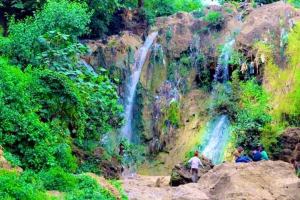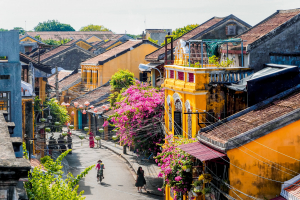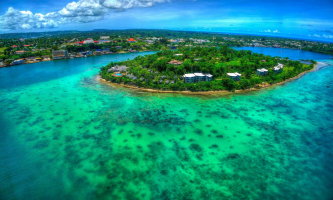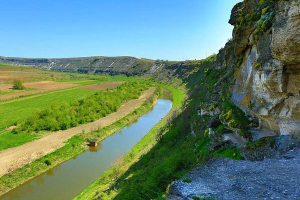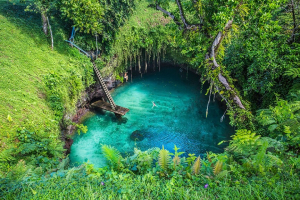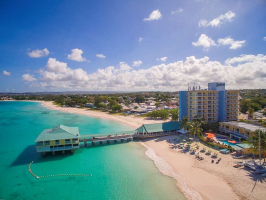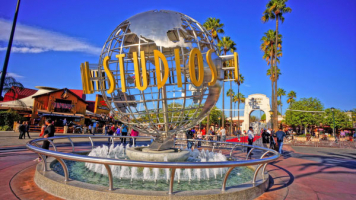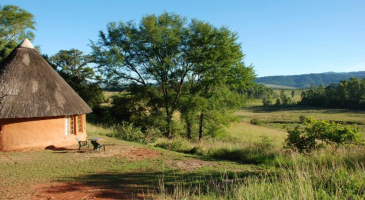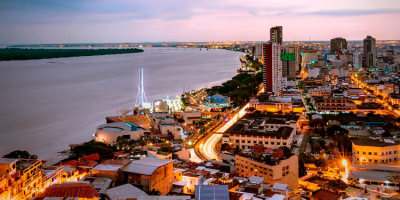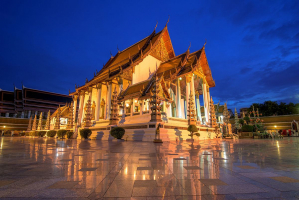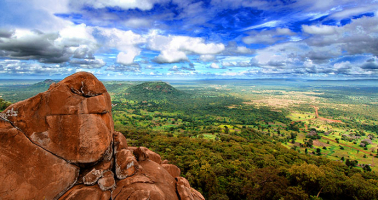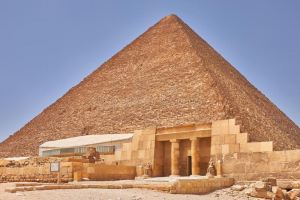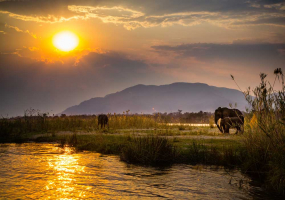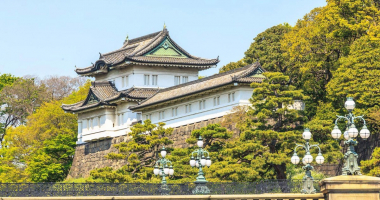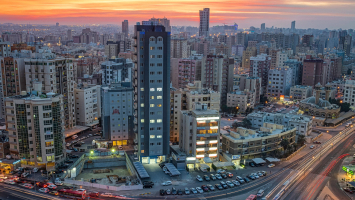Top 10 Best Tourist Attractions in Kenya
Kenya is a land famous for its traditional savanna safaris. Deserts and mountain snows, woodlands and wide plains, Nairobi's bustling cityscape and vibrant ... read more...tribal cultures, freshwater lakes, and coral reefs, that all make up this country of dramatic extremes and classic contrasts. Let's find out the Top 10 Best Tourist Attractions in Kenya below!
-
One of Africa's most beautiful wildlife reserves is the Maasai Mara National Reserve (commonly known as "Masai Mara"). The Mara is the northern extension of the Serengeti, and it forms a wildlife corridor between Tanzania and Kenya. It covers 1,510 square kilometers (580 square miles) and rises to an altitude of 1,500-2,170 meters above sea level. When the conservation areas are included, the total area is at least twice as large. It is home to around 95 mammalian species and over 570 bird species.
It's called after the statuesque, red-cloaked Maasai tribe who reside in the park and have been grazing their animals here for decades. Mara means "mottled" in their language, referring to the dance of light and shadow cast by the acacia trees and cloud-strewn skies over the vast grasslands. From July to October, the park is known for the Great Migration, which sees millions of wildebeest, zebra, and Thomson's gazelle migrate to and from the Serengeti. Hippos and crocodiles throng the banks of the Mara River. Thanks to its relatively substantial populations of lion, cheetah, and leopard, the park is also noted for delivering exceptional predator sightings, especially during the dry months of December through February. Because of the park's altitude, the weather is mild and comfortable all year.
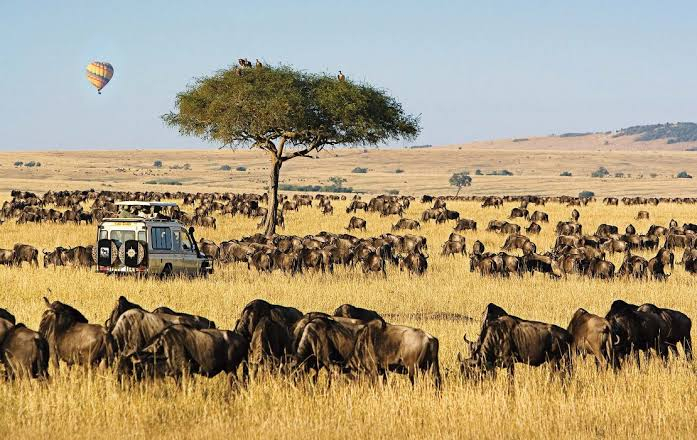
Maasai Mara National Reserve 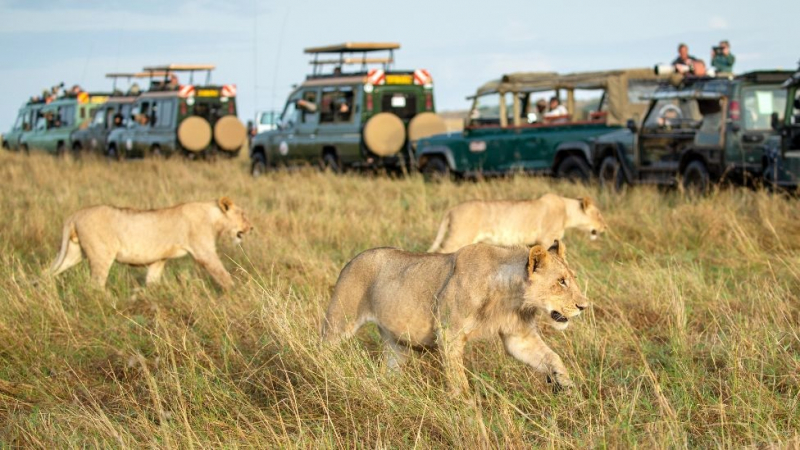
Maasai Mara National Reserve -
Amboseli National Reserve, which is crowned by Africa's highest peak, Mount Kilimanjaro, is one of Kenya's most popular tourist destinations. The term "Amboseli" is derived from a Maasai phrase that means "salty dust," a good description of the park's dry conditions.
In 1948, Amboseli was formed as a wildlife reserve, covering 1,259 square miles (3,261 square kilometers) northwest of Kilimanjaro, Tanzania. Open plains, acacia forest, lava-strewn thornbush region, swamp, marshes, the Amboseli lake bed, and the slopes of Oldoinyo Orok were among the seven ecosystems identified. Historically, the Maasai and their livestock herds lived on the reserve's land. The reserve is one of the greatest sites in Africa to get up close and personal with enormous herds of elephants. The park is home to a wide range of species. Baboons, lions, cheetahs, elephants, black rhinoceroses, hippopotamuses, Maasai giraffes, buffalo, oryx, wildebeests, gerenuk, impalas, and gazelles are among the important wildlife.
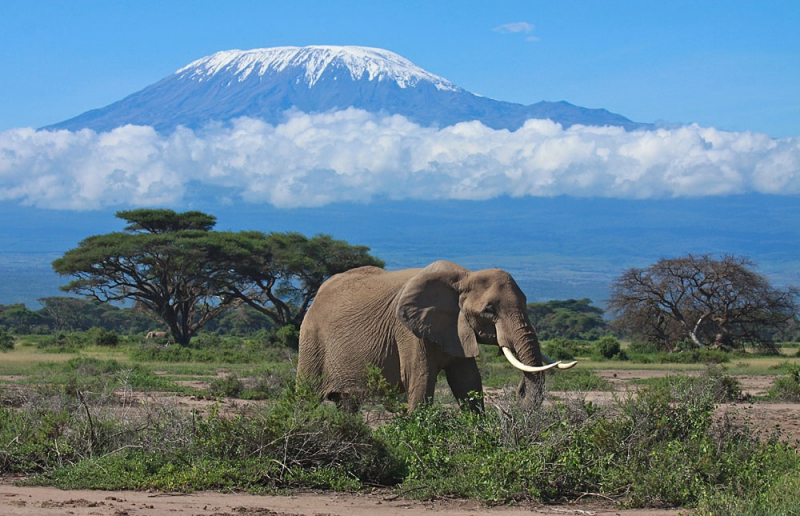
Amboseli National Reserve 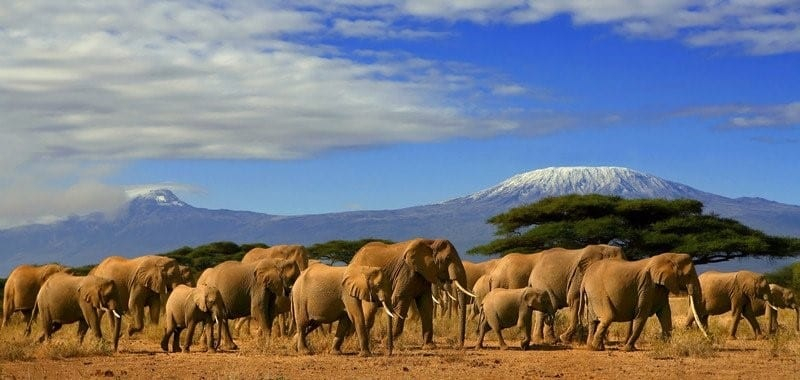
Amboseli National Reserve -
Tsavo, Kenya's biggest park, is divided into two sections: Tsavo West and Tsavo East. These parks cover 4% of the country's total land area and include rivers, waterfalls, savannah, volcanic hills, a vast lava-rock plateau, and a diverse range of species.
Tsavo East, located halfway between Nairobi and Mombasa, is known for its photogenic sights of vast elephant herds rolling and bathing in red dust. The park's palm-fringed Galana River winds through it, giving superb wildlife viewing and a pleasant contrast to the parched plains. The Yatta Plateau, the world's longest lava flow, Mudanda Rock, and the Lugard Falls, which fall into rapids and crocodile-infested pools, are among the other attractions. Tsavo West is wetter and more topographically diversified than the rest of the park, featuring some of the most stunning landscapes in the park's northern reaches. Mzima Springs, a series of natural springs with significant populations of hippos and crocodiles, Chaimu Crater, a superb place for observing birds of prey, and Ngulia Rhino Sanctuary are among the highlights here. Because of the vast vegetation, wildlife is harder to identify in Tsavo West, but the stunning scenery more than makes up for it.
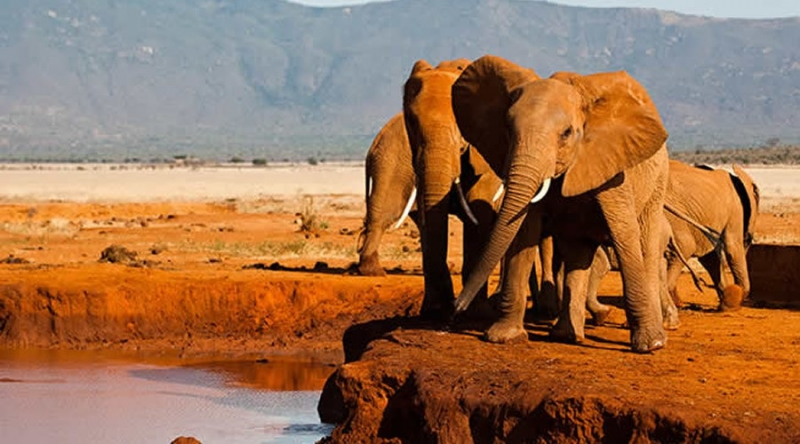
Tsavo National Park 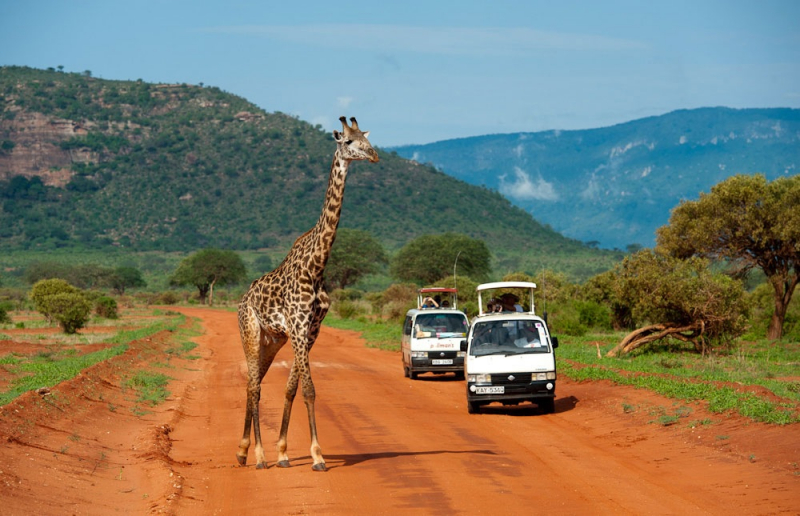
Tsavo National Park -
The northern Kenyan national reserves of Samburu, Buffalo Springs, and Shaba are famous tourist attractions with a diversified and unique semi-arid wildlife population. Three spots are located in an arid region in Kenya's distant north, on the banks of the palm-lined Ewaso Nyiro River.
Elsa the lioness, made famous in the film Born Free, was raised at Shaba National Reserve, one of two sites where George and Joy Adamson raised her. The wildlife in all three reserves is reliant on the river's waters to survive, and many species have evolved to thrive in the dry conditions. Grevy's zebras, Somali ostriches, and gerenuks, long-necked eland that stand on two back legs to reach the young sprouts on top tree limbs, are among them. The Sarara Singing Wells, local watering holes where Samburu warriors sing traditional songs while hauling water for their animals to drink, are a top attraction in Samburu National Reserve. There's a chance you'll see big cats and wild dogs as well.

Samburu, Buffalo Springs, and Shaba National Reserves 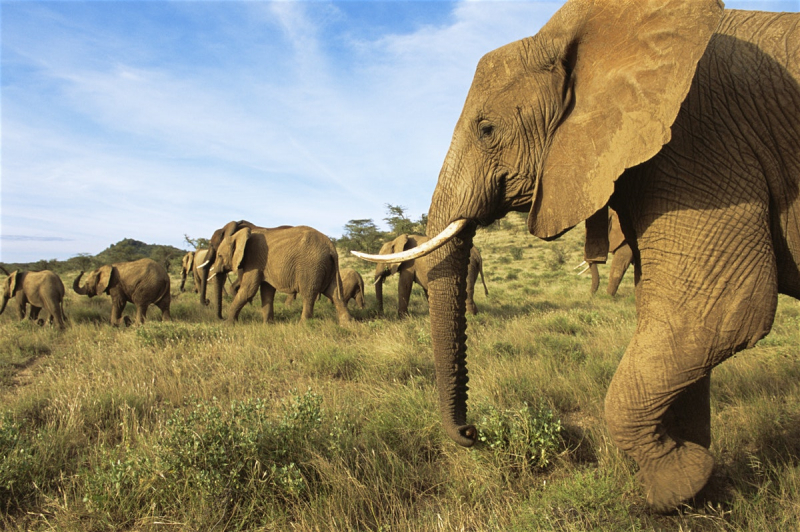
Samburu, Buffalo Springs, and Shaba National Reserves -
The magnificent Lake Nakuru National Park is located on the Great Rift Valley's bottom, bordered by woodland and bushy grassland. The enormous flocks of pink flamingos in Lake Nakuru National Park in Central Kenya are well-known. Lake Nakuru, one of the Rift Valley soda lakes that comprise about a third of the park's area, is teaming with birds.
Since its inception in 1961, the park has been home to over 450 species of birds, as well as a diverse range of other wildlife. The species you could see include lions, leopards, warthogs, waterbucks, pythons, and white rhinos, and the landscapes range from broad grasslands around the lake to steep cliffs and woods. The park also has Africa's largest euphorbia candelabrum forest. These endemic to the region's tall, branching succulents add a dramatic textural aspect to the parched surroundings. From Lake Nakuru itself to the surrounding escarpment and scenic peaks, visitors may enjoy the wide natural variety and different ecosystems. Bird viewing, hiking, picnicking, and wildlife drives are all popular activities at Lake Nakuru National Park.
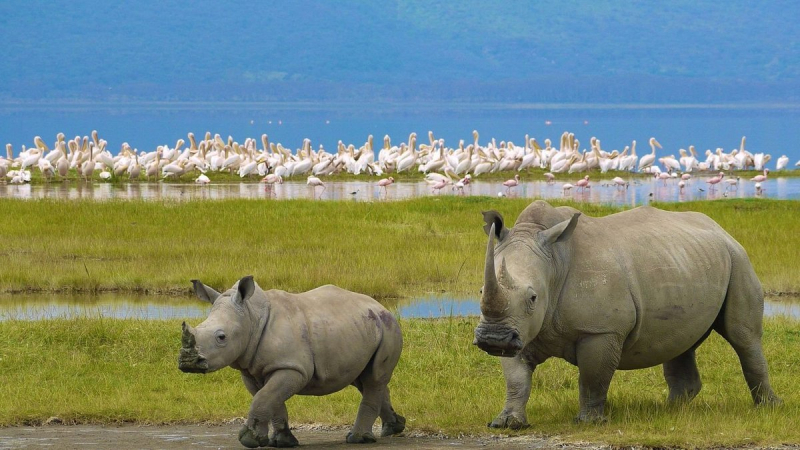
Lake Nakuru National Park 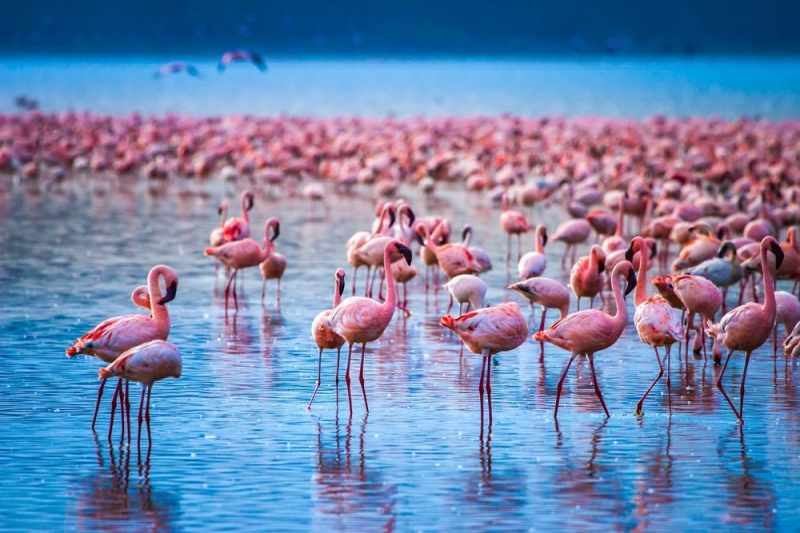
Lake Nakuru National Park -
Lamu, a small island northeast of Mombasa, exudes an old-world charm. Lamu Old Town, a UNESCO World Heritage Site, is Kenya's oldest continuously inhabited village, going back to the 12th century.
One of the best things to do here is to take a stroll around the winding lanes. The buildings reflect the island's illustrious commercial past. Architectural features from the Arab world, Europe, and India are visible but completed in a Swahili style. Wooden doors with carving, coral stone buildings, hidden courtyards, verandas, and rooftop patios are all popular sights. It's like stepping back in time when you go sightseeing here. Dhows plow the harbor, there are few if any motorized cars and donkeys continue to dominate the streets as they have for decades. The majority of Lamu's residents are Muslims, and both men and women wear traditional clothing. Lamu Museum, featuring exhibits on Swahili culture and the region's naval history, Lamu Fort, and the Donkey Sanctuary is among the island's top attractions. If all of the histories becomes too much for you, relax on one of the island's white-sand beaches or drink Arabic coffee in a local café.
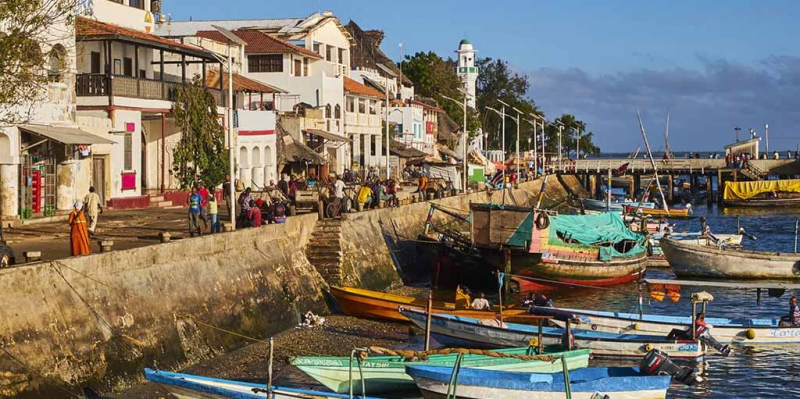
Lamu Island 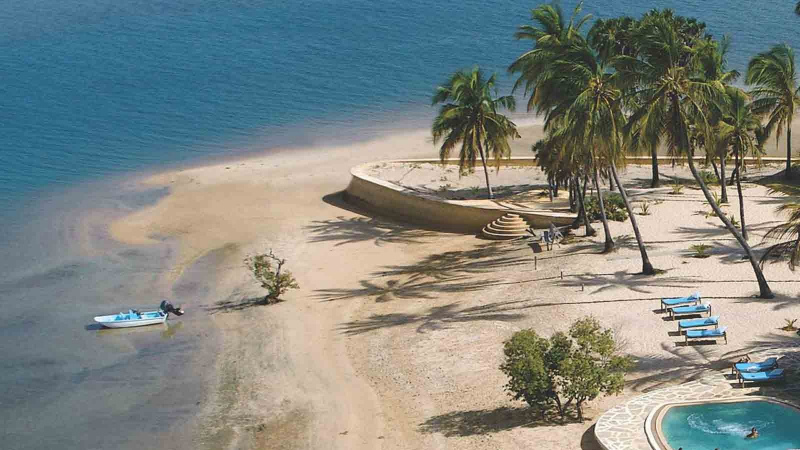
Lamu Island -
Lake Naivasha, at the highest point of the Great Rift Valley, is a birder's paradise. There are around 400 kinds of birds here, including African fish eagles, jacanas, white-fronted bee-eaters, and various kingfisher species.
Boating is one of the best ways to see the wildlife. Hippos splash around in the water, as giraffes, zebras, buffaloes, and eland graze on the lake's edges. Also, keep an eye out for colobus monkeys in the trees. The Crater Lake Game Sanctuary, located near Lake Naivasha, has a wildlife-rich nature trail. Hell's Gate National Park, located just south of Lake Naivasha, preserves a diverse range of species and gives excellent climbing opportunities, including two extinct volcanoes and the red cliffs of Hell's Gate Gorge. On the southern coast of Lake Naivasha, the Elsamere Conservation Centre, the former house of Joy Adamson, author of Born Free, and her husband George, is open for a cup of tea. Note that at times of extreme drought, Lake Naivasha has been known to decrease significantly, and the area's thriving floriculture industry is also having an influence on water levels and quality. The lake, on the other hand, is normally lush and alive.
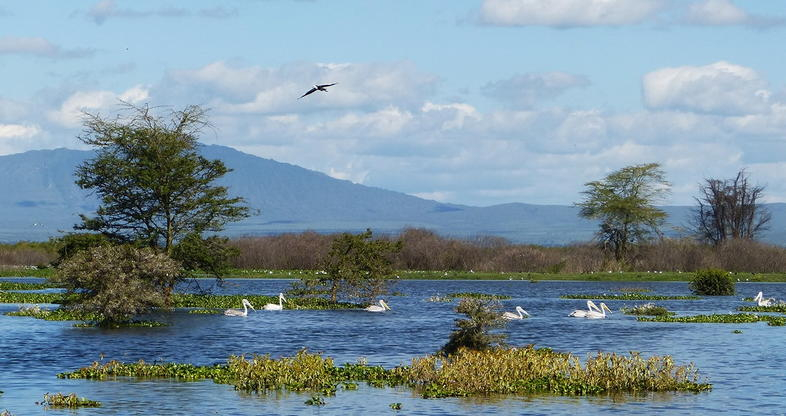
Lake Naivasha 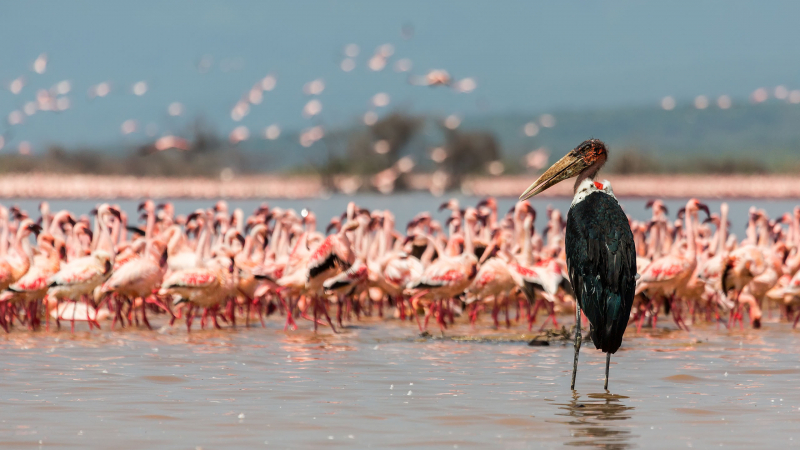
Lake Naivasha -
Nairobi National Park is only a 15-minute drive from Kenya's capital, where you may see a snoozing pride of lions or a gorgeous giraffe strolling across the golden grass.
If you're staying in Nairobi, one of the top things to do is visit this wildlife-rich park, which makes for a delightful day trip – especially if you can't make it to one of the larger game reserves. Buffalo, leopard, zebras, wildebeest, hippos, elephants, and cheetah are among the classic safari stars, and the park's rhino sanctuary houses some of the world's most endangered species. The Nairobi Safari Walk is a great way to see wildlife on foot, and birders will be pleased to know that the park is home to over 400 kinds of birds, including the stunning grey-crowned crane. A trip to the park wouldn't be complete without a stop at the David Sheldrick Wildlife Trust Elephant Nursery, which is located near the park's main entrance. Save time to visit Giraffe Centre, which is located near the famed Giraffe Manor and where these long-necked beauties eat directly from your hands.
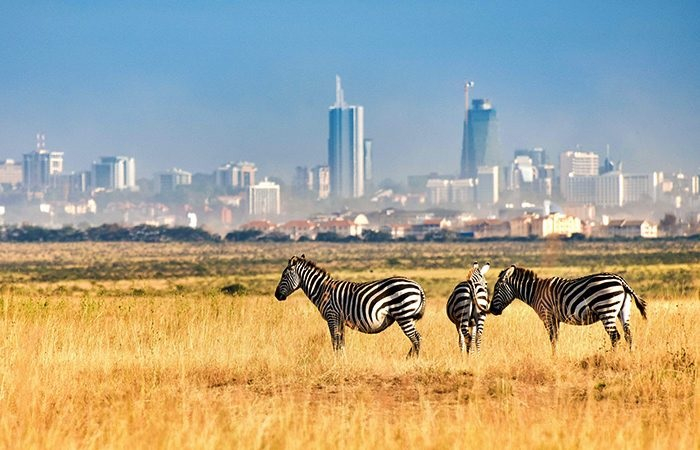
Nairobi National Park 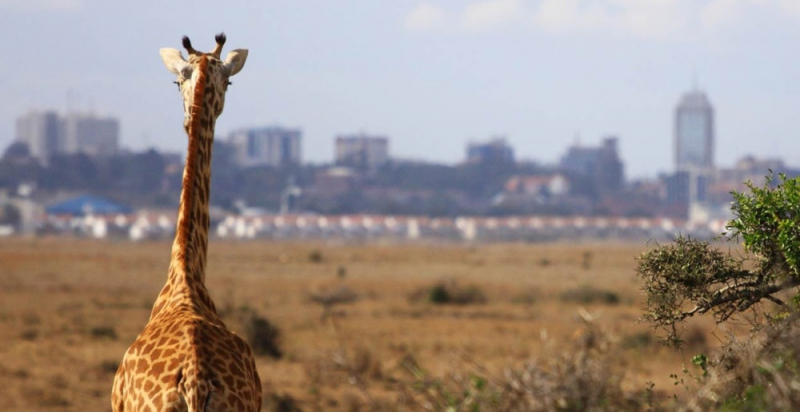
Nairobi National Park -
At the David Sheldrick Wildlife Trust, you may mingle with cute newborn pachyderms while also knowing that you're helping a vital conservation group. This well-known wildlife refuge rescues and rehabilitates orphaned elephants, and you can see up close and personal with these adorable creatures. The baby elephants are hand-reared here until they are around two or three years old, and you can see the caretakers bottle-feed them.
The elephants are transported from the sanctuary to a reintegration center in Tsavo East National Park before being released back into the wild. You'll never forget watching these lively pint-sized pachyderms wallow in the mud or poke a soccer ball around. Consider adopting an orphaned elephant, giraffe, or rhino before you go if you want to do more to help these majestic creatures. You'll receive monthly updates on its growth. The nursery is conveniently located near the main gates of Nairobi National Park, allowing you to visit both of these popular tourist destinations on the same day.
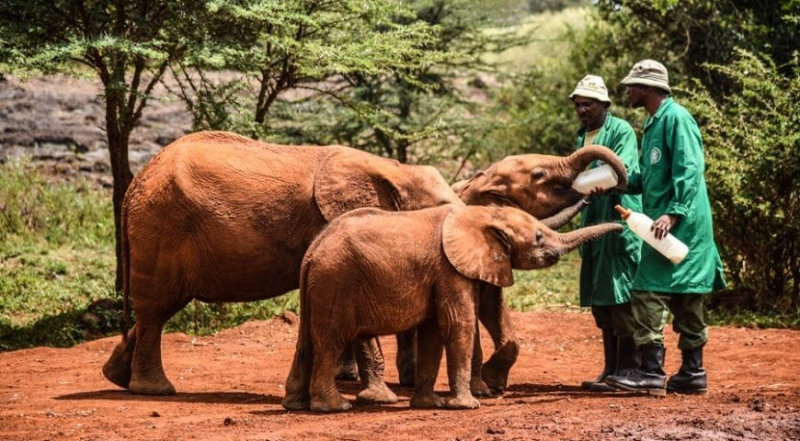
David Sheldrick Wildlife Trust Elephant Nursery 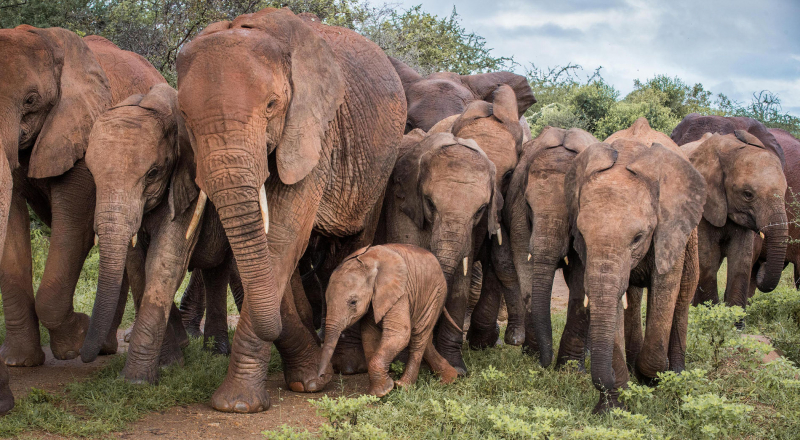
David Sheldrick Wildlife Trust Elephant Nursery -
Malindi, on the Kenyan coast north of Mombasa, has two characters, part ancient old town, part contemporary tourist destination, this renowned seaside town has it all. It is also a melting pot of cultures and cuisines due to its long commercial history.
Many visitors travel from Europe to relax on Watamu Beach's pristine beaches and dive the coral reefs of the Malindi and Watamu Marine National Parks. If you're searching for free things to do in Kenya, you can’t miss a relaxing day on the beach in Malindi. The medieval town, which dates from the 12th century, also offers a feel of Swahili history. The Jami Mosque, two 14th-century pillar tombs, and the Church of St. Francis Xavier, one of East Africa's oldest churches, may all be found here. The Vasco De Gama Cross, which stands atop the promontory, is one of Africa's oldest standing monuments. The Falconry of Kenya, a rehabilitation center for sick and injured birds, is another famous tourist destination. The Marafa Depression, some 30 kilometers northeast of Malindi, is also worth seeing. This collection of sandstone gorges, also known as Hell's Kitchen or Nyari, was sculpted by the wind and rain and looks like a mini Grand Canyon.
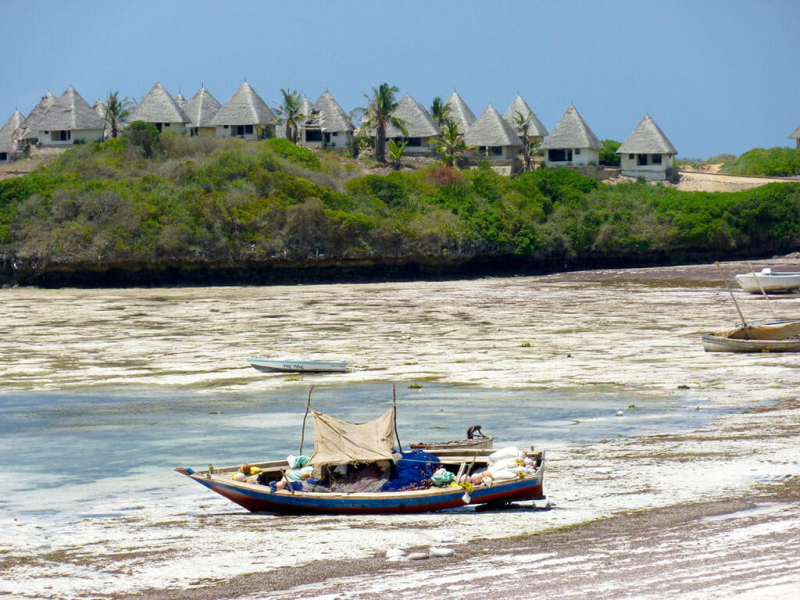
Malindi 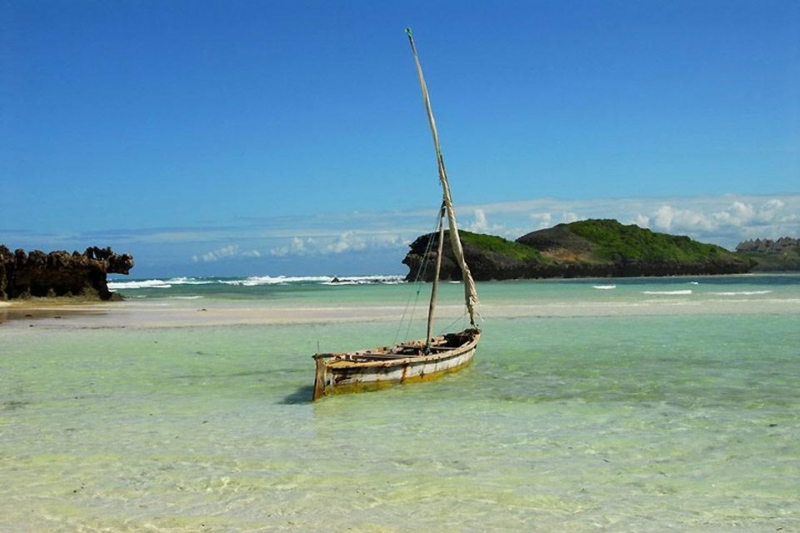
Malindi












